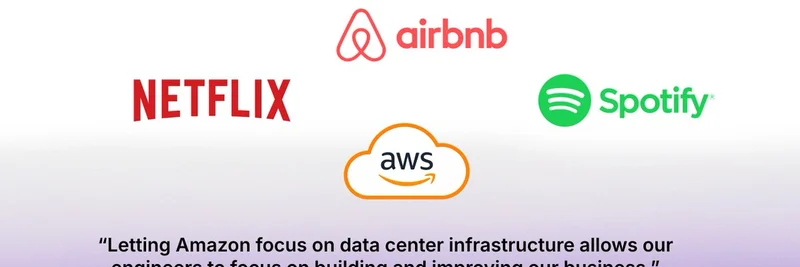In a recent tweet that's sparking conversations in the crypto space, Nick White, a key figure at Celestia, draws a compelling parallel between Web2 and Web3 infrastructure. He points out how companies like Netflix, Airbnb, and Spotify rely on Amazon Web Services (AWS) to handle their computing needs, freeing up their teams to focus on core business innovations. Similarly, White argues, crypto applications will turn to blockspace providers like Celestia for decentralized computing, enabling developers to prioritize what truly matters—their projects.
The Web2 Outsourcing Model: A Proven Success
Let's break this down. In the traditional web world (Web2), building and maintaining data centers is a massive undertaking. It requires huge investments in hardware, security, and scalability—not to mention the expertise to keep everything running smoothly. That's why giants like Netflix outsource this to AWS. As former Netflix Director of Engineering John Ciancutti put it, "Letting Amazon focus on data center infrastructure allows our engineers to focus on building and improving our business."
This model has powered some of the biggest tech successes. By offloading the heavy lifting, companies can iterate faster, scale efficiently, and innovate without getting bogged down in backend ops. It's a no-brainer for efficiency, and it's why cloud computing has become a trillion-dollar industry.
Enter Web3: The Need for Decentralized Outsourcing
Now, flip the script to crypto and Web3. Building decentralized apps (dApps) involves similar challenges but with added layers of complexity—like ensuring data availability, security against censorship, and scalability across blockchains. For meme tokens, which often explode in popularity overnight, handling this infrastructure in-house can be a nightmare. Sudden spikes in transactions or community engagement can crash poorly prepared systems, leading to lost opportunities or even project failures.
This is where modular blockchains like Celestia come in. Celestia specializes in providing "blockspace"—essentially, the foundational layer for data availability in decentralized networks. Think of it as the AWS equivalent for crypto: a reliable, scalable provider that handles the decentralized computing grunt work. By outsourcing to Celestia, crypto projects can deploy rollups (layer-2 solutions that bundle transactions for efficiency) without building everything from scratch.
For meme token creators, this is game-changing. Meme coins thrive on virality, community hype, and quick launches. Instead of wrestling with blockchain infrastructure, teams can focus on crafting engaging narratives, building tokenomics, and fostering communities. Projects on chains that leverage Celestia can scale seamlessly, handling massive transaction volumes without the headaches of maintaining their own nodes or data layers.
How Celestia Fits into the Meme Token Ecosystem
Celestia isn't just theoretical—it's already enabling a new wave of modular blockchain designs. In modular architectures, different layers handle specific tasks: execution, settlement, consensus, and data availability. Celestia focuses on data availability, ensuring that transaction data is verifiable and accessible without bloating the main chain.
For meme tokens, this means launching on rollups that use Celestia under the hood, like those on the Celestia ecosystem. These setups offer low fees, high throughput, and decentralization—perfect for pump-and-fun style tokens that need to go viral fast. Imagine a meme coin inspired by the latest internet trend: with Celestia, you can spin it up quickly, attract traders, and let the infrastructure handle the rest.
This outsourcing trend aligns with broader shifts in crypto. As the industry matures, specialization will drive growth, much like in Web2. Blockspace providers like Celestia reduce barriers to entry, making it easier for blockchain practitioners to experiment and innovate. Whether you're a dev building the next big meme or a trader spotting opportunities, understanding these tools is key to staying ahead.
Implications for Blockchain Practitioners
If you're in the meme token space, keep an eye on Celestia-integrated projects. They could offer advantages in speed and cost, giving your favorite memes a competitive edge. For developers, outsourcing decentralized computing means more time for creative work—designing smart contracts, engaging communities, or even launching cross-chain features.
White's tweet, posted on October 22, 2025, has already garnered likes and replies, with some users drawing comparisons to other providers like EigenLayer and others questioning timelines for adoption. It underscores a growing consensus: just as Web2 leaned on cloud giants, Web3 will embrace specialized providers to scale.
In the end, this shift could democratize crypto even further, empowering more creators to build without massive resources. As meme tokens continue to capture the fun side of blockchain, tools like Celestia ensure the tech keeps up with the hype. If you're diving into Web3, exploring modular solutions might just be your next smart move.

